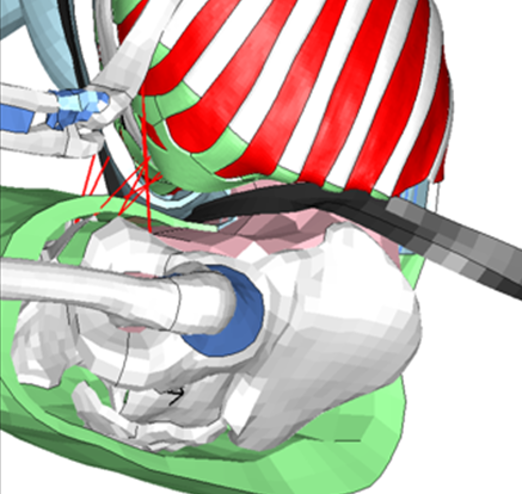The fourth step for the development of SAFER's I-HBM has been approved
With the overall research question on how pelvis to lap belt interaction and injury risks can be predicted for a large population of occupants in various sitting postures, including reclined, the objective is to develop and validate pelvis and spine injury predicting models for the SAFER HBM. The model will be morphed to populations of female and male car occupants of different ages and sizes.
The complete name of the project is ”Pelvis and spine injury predicting models for women and men in a variety of sitting postures in future autonomous cars”. The project is called "I-HBM4", since it is the fourth phase in the development of our human body model. Three SAFER partners are included in the project: Autoliv, Volvo Cars, Chalmers. Also, Sahlgrenska University Hospital is partner. A doctoral student will work in the project.
Morphing to various populations – both male and female
Reclined sitting poses challenges for occupant protection due to increased risk of submarining and increased lumbar spine loads. Crash test dummies are not functional and available human body models need improvements to be capable of restraint developments for a larger variety of sitting postures and to include occupant individual variations.With the overall research question on how pelvis to lap belt interaction and injury risks can be predicted for a large population of occupants in various sitting postures, the objective is to develop and validate pelvis and spine injury predicting models for the SAFER HBM. The model will be morphed to populations of female and male car occupants of different ages and sizes.
The project combines fundamental research and frontline industrial applications to ensure timely dissemination. The project group collaborates with international research groups ensuring access to the most recent data for model development and validation.
Financed by FFI
Sweden’s long-term road safety goal is that there should be no fatalities or serious injuries in road traffic - The Vision Zero" program. With the tool developed in the current project the protection of passenger vehicle occupants can increase by the improvement and development of protection systems. Principles from this project can be applied to other tools, such as models of vehicle occupants and elderly, to improve the protection of the road users. The budget is 12.4Mkr. The project starts 1st of April and will last until March 31, 2022.

